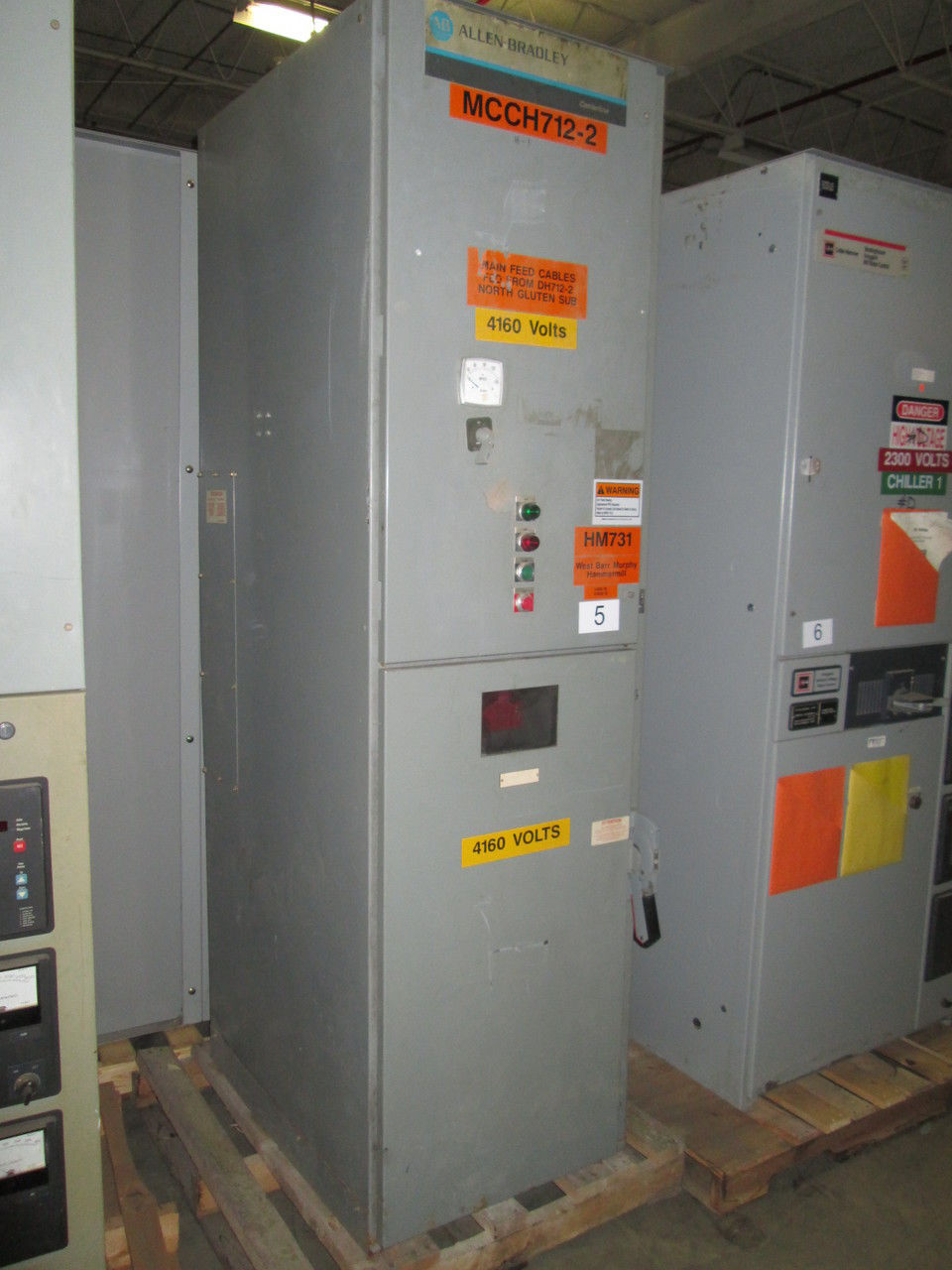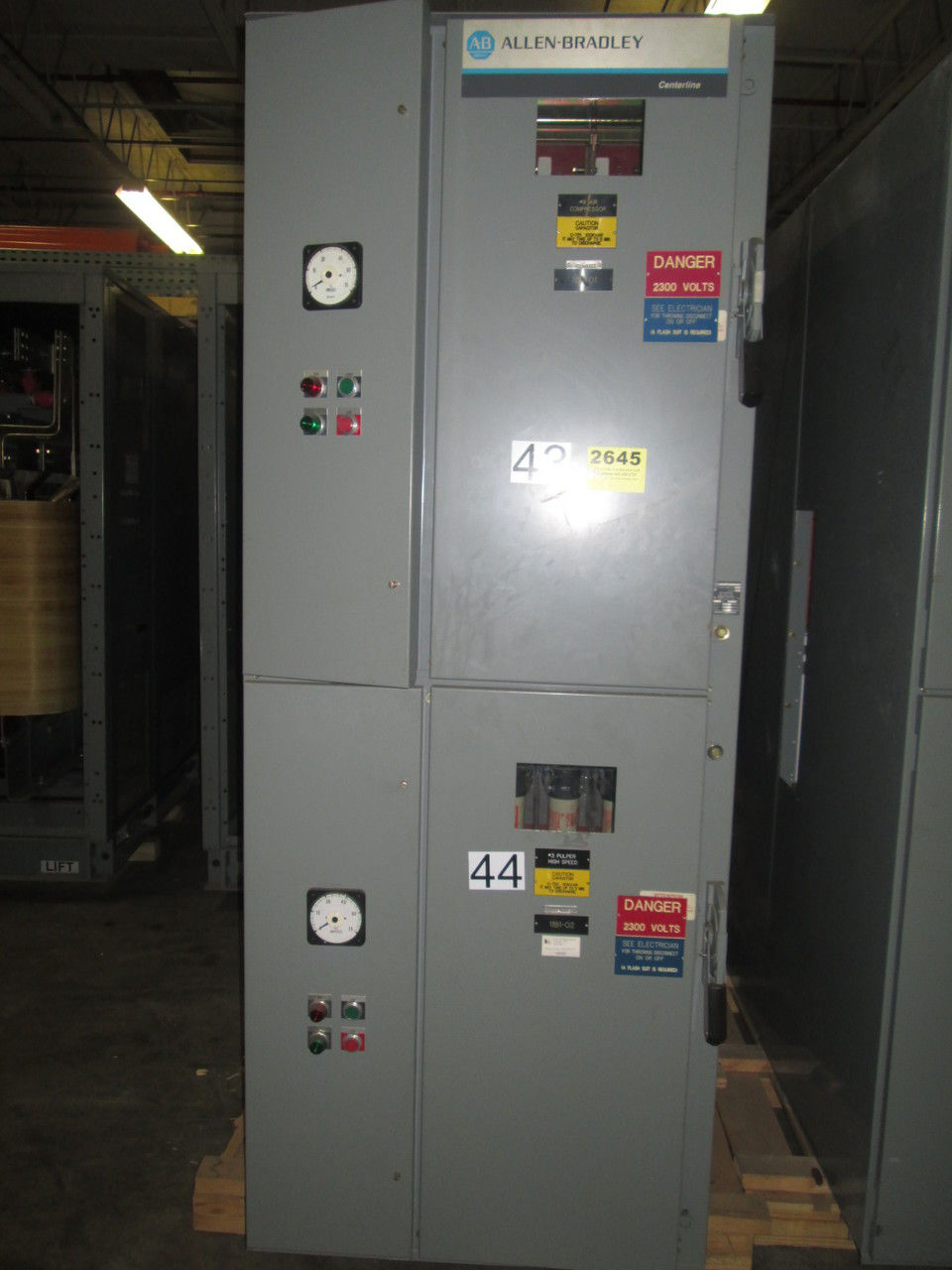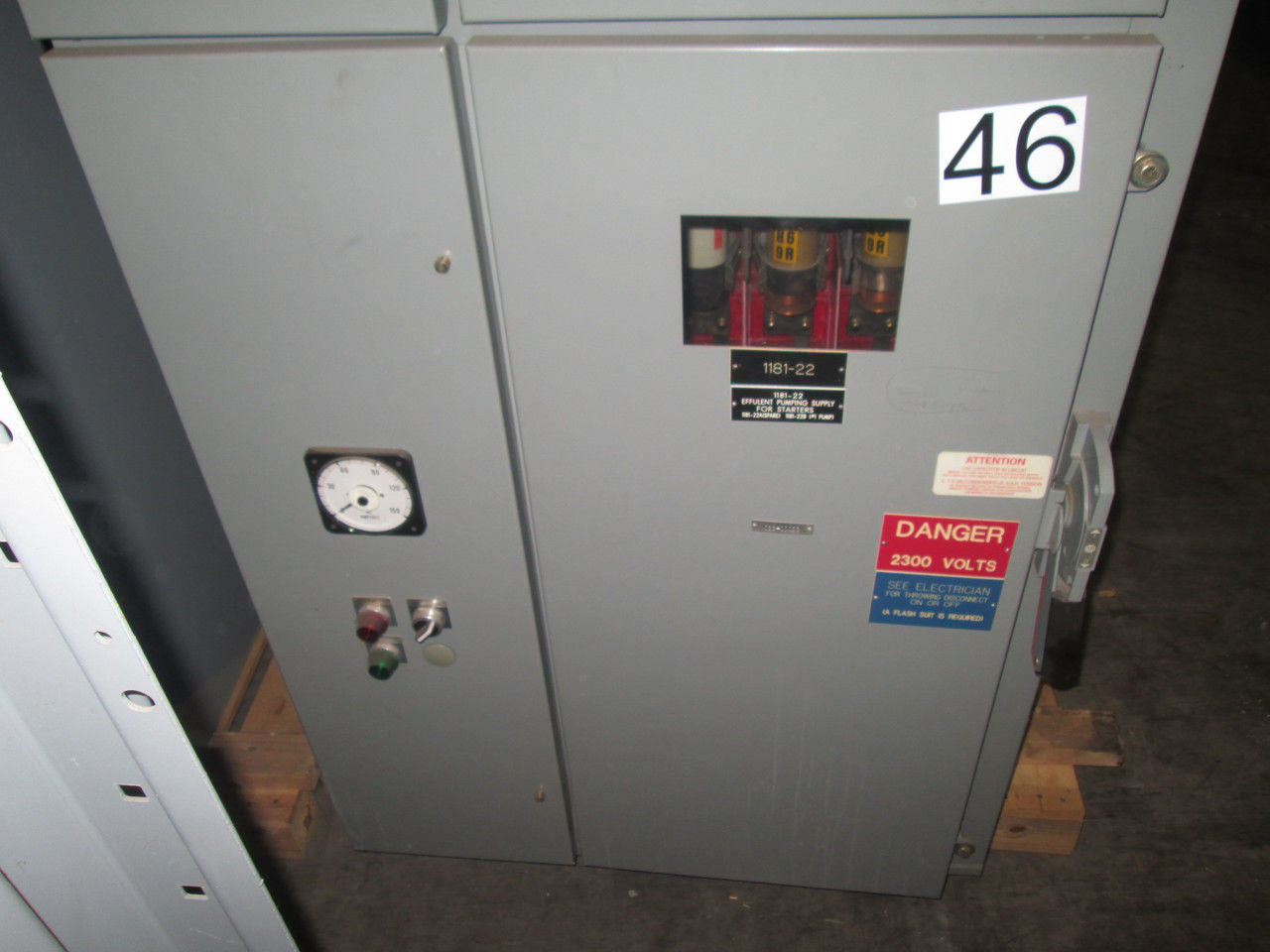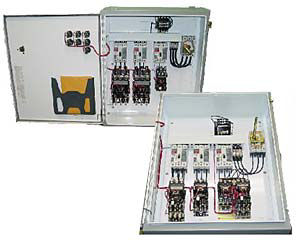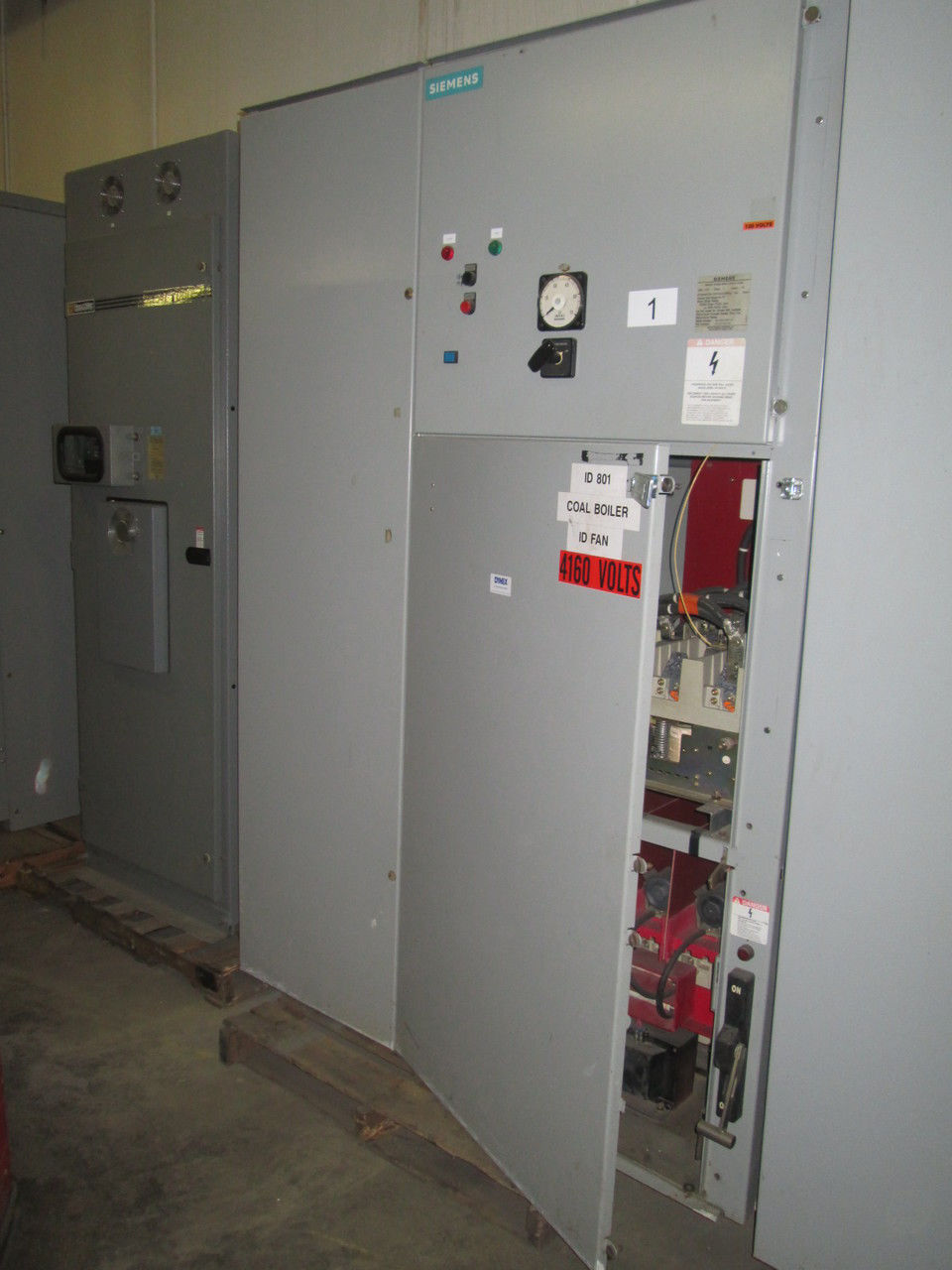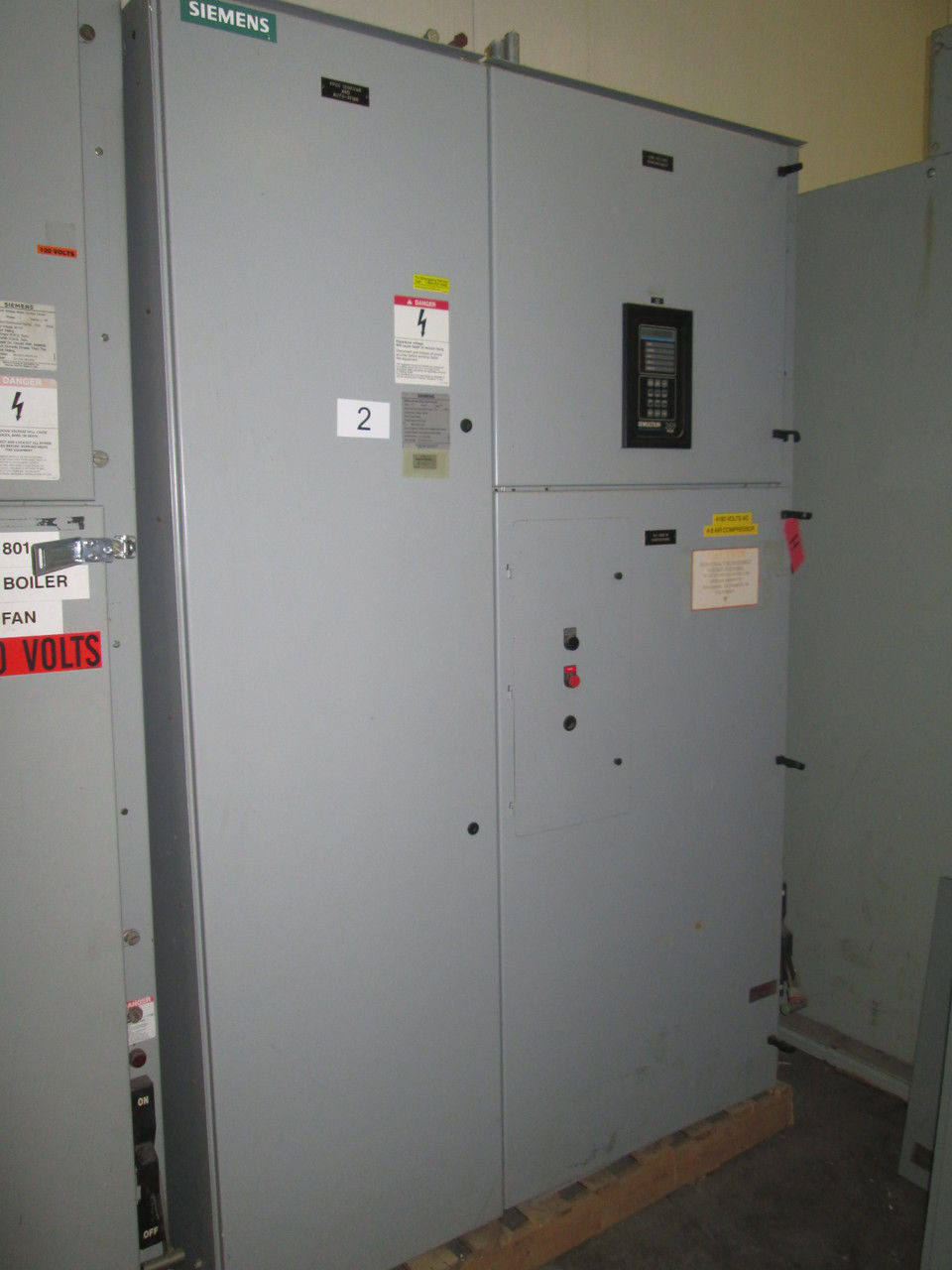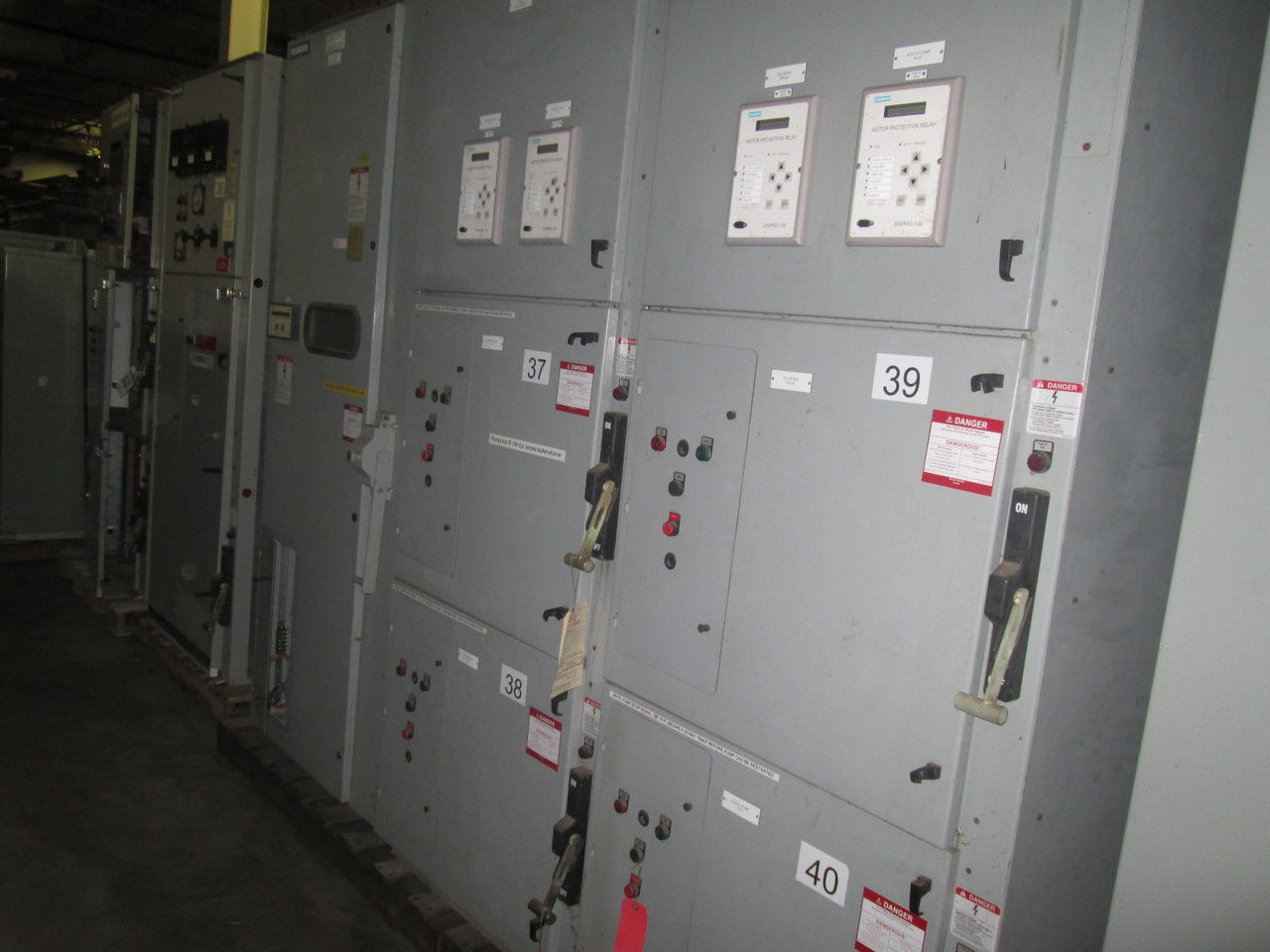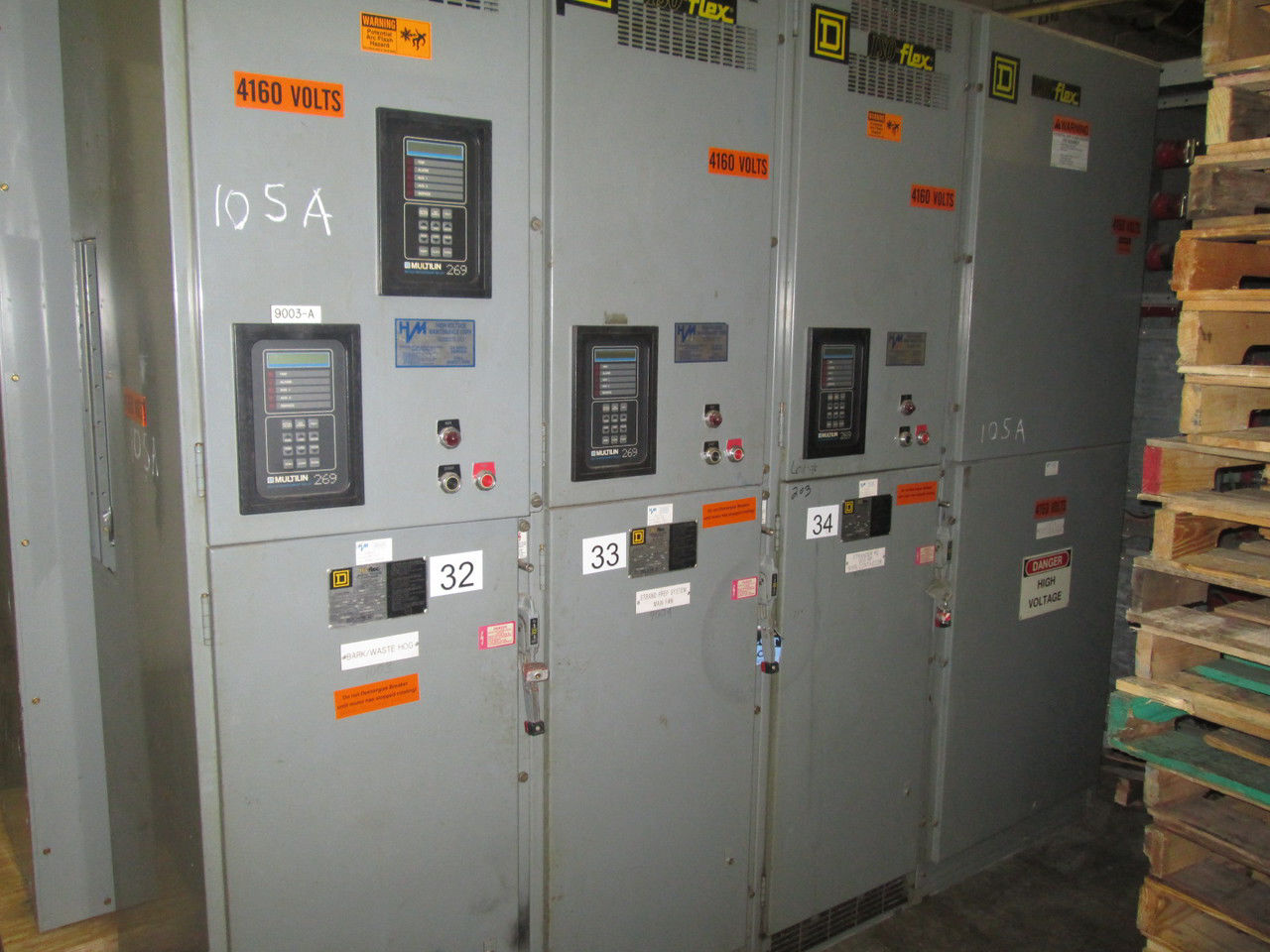Starters

Allen Bradley Bulletin 1512 4160V 800HP 84.6 Amps R&G
Allen Bradley Centerline Bulletin 1512 Motor Controller Line-up 2400V w/ 4 Starters R&G
Allen Bradley Centerline Bulletin 1512 Motor Controller Line-up 2400V w/ 4 Starters R&G
Custom Starter Panels
Siemens 8100 Class E2 Motor Controller #25-319-343-501 4160V 300HP 39.6 Amps R&G
Siemens 8100 Class E2 Motor Controller #25-321-850-501 4160V 1250hp 148 Amps R&G
Siemens Series 81000 Class E2 Motor Controller Line-up 2400V w/ 3- 450hp Starters R&G
Square D Iso-Flex Medium Voltage Controller Model 3 type CG42 4160V Line-up R&G
Reconditioned, Refurbished, Tested Electric Motor Starters
Need guidance in selecting the right motor starter? We stock popular and hard-to-find surplus motor control components. These include reconditioned motor starters, used and refurbished motor starters and surplus starters from excess inventory in the supply chain. Our motor control parts inventory most likely includes the right solution for your situation.
When it comes to starters, our product specialists are a point of contact with years of experience in the electrical field. This means you receive recommendations based on experience in solving problems similar to yours.
We locate and deliver electric motor starters that meet industry standards, providing dependability and longevity. Working with you as a trusted partner our team can help you take the worry out of selecting the right starter.
Lastly, by choosing our surplus options, you not only benefit from significant cost savings but also contribute to sustainable practices by giving these components a second life.
How to Select the Right Motor Starter for Motor Control
Will the motor starter be used indoors or outdoors?
Environmental circumstances have a significant influence on the choice of motor starters. Temperature fluctuations, humidity, and exposure to dust or corrosive substances provide separate problems in indoor and outdoor contexts. Choosing a motor starter suited to your application provides long-term reliability and safety.
What are the motor starter voltage requirements?
Understanding the voltage requirements of the motor is necessary for selecting a compatible starter. Different motors operate at different voltage levels, and selecting a motor starter that matches the voltage specifications of the motor gets you efficient and reliable performance. Choosing the wrong voltage rating leads to problems and can damage the motor or the starter.
How many phases does the starter need?
The number of phases needed by the motor starter should be consistent with the motor's design. Motors can be single-phase or three-phase, and using the proper starter setup maintains compatibility. Mismatching the phase requirements can result in inefficient performance, higher energy consumption, and significant damage to the motor and starter.
What overload protection capabilities are needed?
Overload prevention prevents motor damage caused by high current. The motor starter should include built-in features or be compatible with overload protection devices to defend against problems like motor overheating or electrical failures. This extends the life of both the motor and the starter, lowering the chance of unplanned downtime and maintenance expenses.
What communication and control protocols are required?
Integration with current control systems and communication protocols is important for electrical and mechanical performance in the production environment. Compatibility with industry-standard communication protocols enables improved monitoring, control, and synchronization with other equipment in the facility. This supports a uniform and efficient manufacturing process with enhanced automation and data exchange capabilities.
Starter Types We Commonly Stock
Direct-On-Line (DOL) Starter:
Purpose: DOL starters provide a simple and cost-effective method of starting electric motors by directly connecting the motor to the power supply.
Application: The main advantage is simplicity and reliability. DOL starters are good for small to medium-sized motors and are easy to install and maintain. They’re ideal for applications where the motor can handle full voltage at startup without causing issues.
Star-Delta Starter:
Purpose: Star-Delta starters are designed to reduce the starting current and torque during the beginning phase of motor operation, gradually transitioning from a star-connected winding to a delta-connected winding.
Application: By reducing the starting current, these starters minimize impact on the power supply and prevent excess stress on the motor. This helps in scenarios where the power grid capacity is a concern or when starting a motor at full load could cause voltage dips.
Soft Starter:
Purpose: Soft starters control the acceleration and deceleration of the motor by gradually adjusting the voltage, reducing the stress on the motor and the driven machinery.
Application: The gradual startup and shutdown provided by soft starters reduce mechanical and electrical shocks, extending the lifespan of the motor and reducing wear on connected equipment. Soft starters are especially useful in applications where a smooth and controlled start is essential, like conveyor systems and pumps.
Variable Frequency Drive (VFD):
Purpose: A VFD can be used for both motor starting and speed control. VFDs regulate the motor speed by adjusting the frequency and voltage of the power supplied to the motor, for tight control over the motor's rotational speed.
Application: VFDs provide energy savings by allowing motors to operate at their intended speeds for varying load conditions. This lowers energy consumption, better process control, and increased overall efficiency. VFDs are used in applications where variable speed control is essential, like in HVAC systems, pumps, and fans.
Reversing Starter:
Purpose: Reversing starters enable the motor to operate in both forward and reverse directions, supporting bidirectional movement of machinery or processes.
Application: The chief advantage control of the direction of rotation. Reversing starters are important in applications where the load or process requires back-and-forth movement, like conveyor systems, cranes, and certain types of machinery. This starter type provides needed flexibility for situations needing reversible motor operation.
Need help selecting the right electric motor starter?
A product specialist is here to walk you through the choices we have in stock, ready to ship. Call us at 800.328.1842 and our sales team will be happy to assist you.


